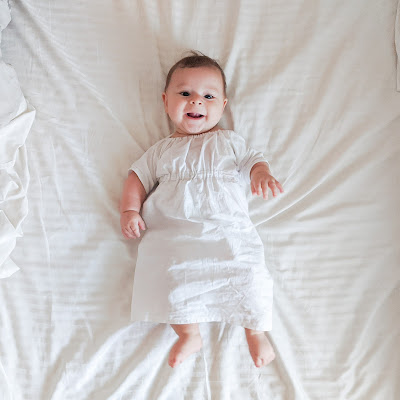1950s Shorts - Simplicity 4680
I was so excited to find this shorts pattern! I have a hard time finding shorts that I like in the store, (“high-waisted” never seems to actually mean "high-waisted" on me), and these are the perfect silhouette! I didn’t waste any time in making a pair, and I was so pleased with how they turned out, I made another the next day! I thought I would try a follow-along, showing you the steps in how I made these shorts, and hopefully, they will help you in making either this exact pair, something similar, or this will be just for entertainment!
I then pinned the front pieces together and the back pieces together at the crotch seams and sewed those together with a 5/8” seam allowance.
I ironed open the seam, laid the zipper on top, and then basted it in place. I then turned the shorts over, and using a zipper foot, topstitched all around. Finally, I used a seam ripper to open the seam across the zipper. Because I had trimmed my seam allowance too short, I had to sew a lot closer to the zipper than I wanted to, but I think it still turned out ok!








I forgot to take pictures at the very beginning, but it should be very easy to catch you up! I laid out my paper pattern pieces on the fabric, paying attention to grain lines, pinned them down, then cut out the pieces. I traced out the dart lines on to the fabric with chalk, and then I basted the darts into place. I then took the pieces to my sewing machine and sewed each of the darts.
I then pinned the front pieces together and the back pieces together at the crotch seams and sewed those together with a 5/8” seam allowance.
So with these shorts, to make them as close to “real jeans” as possible, I decided to finish all of the edges with a flat felled seam. What this means is you trim one side of each seam allowance very narrowly (about 1/4”), being consistent with which side of the seam I trimmed, and then folding the now longer side twice to enclose the raw edges. A quick tip is to make sure to trim the corners to reduce bulk. After folding the seam over twice, I cheat and use a blind hem foot to topstitch the seam down, to make sure it is nice and uniform.
Now here I say STOP! because (on the first pair of shorts I remembered) I totally forgot this one part and almost ruined them. Don’t be me. Learn from my mistakes. Although you do sew the whole crotch seam on the 2 back pieces, you do NOT flat fell the whole seam. You need to stop before the notch, or about 8” from the waist. This is to make sure you can put in a zipper.
I ironed open the seam, laid the zipper on top, and then basted it in place. I then turned the shorts over, and using a zipper foot, topstitched all around. Finally, I used a seam ripper to open the seam across the zipper. Because I had trimmed my seam allowance too short, I had to sew a lot closer to the zipper than I wanted to, but I think it still turned out ok!
Next, I pinned the side seams and the inner leg seams together and stitched with a 5/8” seam allowance. I flat felled these seams too. The inner leg seam is a little tricky, as that is where there is the most bulk, but since I was consistent with which direction I laid my flat fell seams, and they were not as bulky as they could be.
Now on to the waistband! I sewed the two ends, one into a point and the other into a rectangle 5/8” seam allowance, clipped the corners, turned them inside out and ironed them.



Then I pinned the right side of the waistband to the wrong side of the shorts, matching notches, and sewed that in place (5/8” seam again!). I then trimmed that seam to try and reduce bulk. I then turned the raw side of the waistband in by 5/8” and then lined that up with the previous seam line, pinning that into place.
I busted out my nifty little blind hem foot again and topstitched the waistband into place, and just topstitched the whole waistband (about 1/8”) just for good measure and aesthetics.

Almost done! I added a machine buttonhole on the pointy side of the waistband, and a button on the other.
Hemmed these suckers by hand with a whip stitch.
And these shorts are all done! The first pair I made have the additional pockets, and while pockets are amazing, I wanted this second pair to have a different look.




I hope you enjoyed this little sew along!
Till next time! ♥️




























Comments
Post a Comment